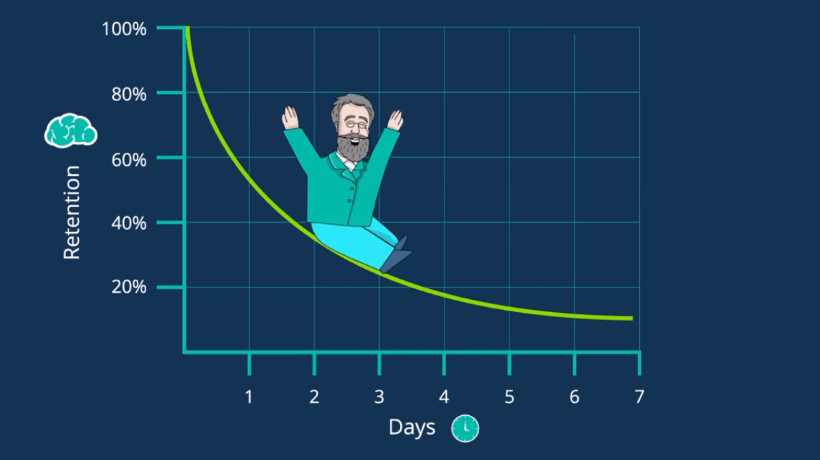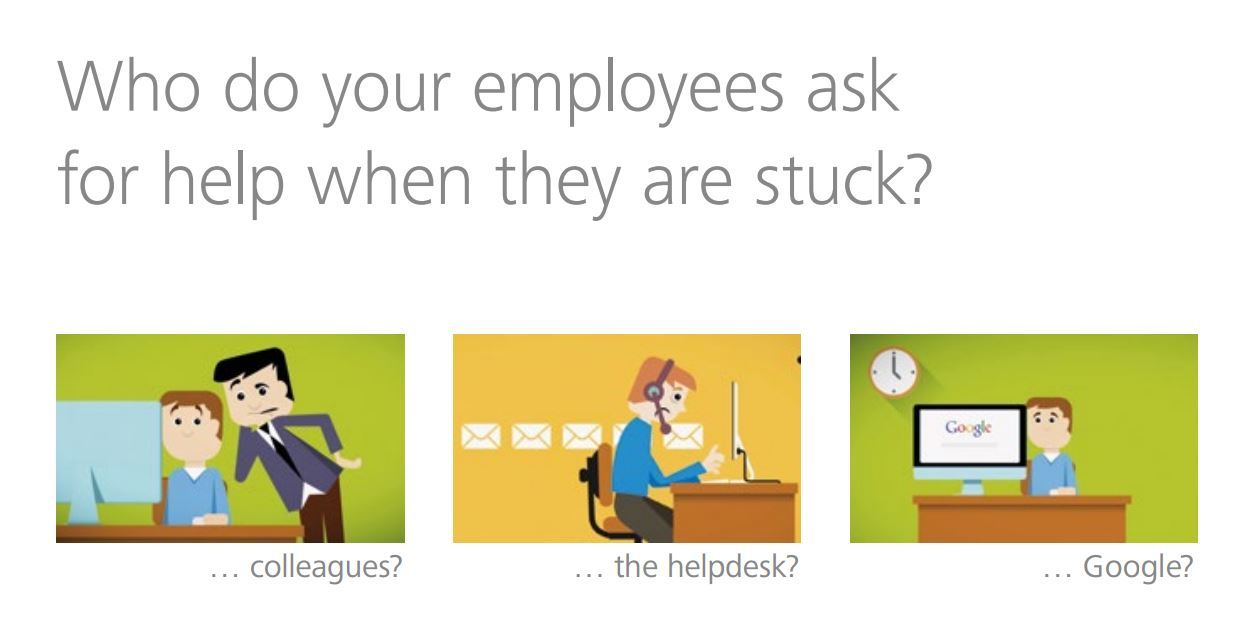The Forgetting Curve in eLearning
The human brain is an amazing mechanism. It can store vast amounts of information, carry out the most complex of tasks, and bounce back from experiences that would render other parts of the body virtually useless. But the brain does have an Achilles’ heel- which is no other than memory retention. Simply put, what we learn may not stick in our brain due to the forgetting curve. This means that even the most powerful eLearning experiences will be ineffective, as memory overload will prevent us from absorbing and retaining information for later use.
So, what is the forgetting curve?
The idea of “forgetting curve” is credited to Hermann Ebbinghaus, a notable German experimental psychologist, born in 1850. Ebbinghaus theorized that the human brain will forget information it has learned if that information is not put into practice. The longer we wait to apply acquired knowledge, the less we remember it. For example, if an individual is taught how to carry out a basic customer service transaction, such as completing a return, but is not required to put this information into practice, he/she will gradually forget the steps involved over the course of time.
According to Ebbinghaus' research, there are a few key principles involved in the forgetting curve:
- It is often easier for learners to memorize new information if it ties into real world situations. Information must be relevant and meaningful to them, or else they are likely to forget it more rapidly.
- When there is more learning material involved, the amount of time it takes to absorb information significantly increases.
- As a general rule, learners are able to relearn information more easily than learning the subject matter for the first time. In addition, each time information is relearned, the length of time it takes to forget the information goes up.
- Learners are able to learn more effectively when information absorption is spread out over a longer period of time, as opposed to having to learn it all at once.
- Learners start to forget information immediately after the learning experience. In fact, this is the time when forgetting occurs most rapidly. However, forgetting will slow down over the course of time.
There are various studies regarding the forgetting curve and knowledge retention rates. Based on the Ebbinghaus’ Forgetting Curve, learners will have forgotten an average of 90% percent of what they have learned within the first month. However, the nature of the subject matter, the learner's background, the learner’s strength of memory and a variety of other factors will often have a significant impact upon the rate of forgetfulness in eLearning courses.
Based upon the ideologies of the forgetting curve, in order to avoid memory overload it's important to keep lessons as brief as possible, and to offer follow-up learning experiences. Learning must also be disbursed over time. For example, rather than holding one online training session once a year that takes up an entire work day, you can hold several shorter online training sessions throughout the year. By doing this you not only help to prevent cognitive overload, but you also enable your learners to digest the information and retain it more effectively over time.
The primary goal of any eLearning course or online training event is to offer learners a chance to fully absorb new skills and knowledge. By using the forgetting curve in eLearning design and development, you have the power to create eLearning experiences that are memorable and highly effective, so that your audience can forget about forgetting what they need to know!
Tips to boost knowledge absorption and retention
- Learners must know why they have to acquire the information offered in your eLearning course in order to become fully engaged. By doing so, the experience becomes more memorable and powerful, which can boost knowledge retention. As such, you'll want to tie learning activities into real world challenges and benefits. Encourage them to put the information to use by integrating eLearning scenarios or simulations, so that they will realize the consequences or rewards of learning this new information.
- Upon completion of each module, learners should be assessed to see how much knowledge they have gathered. Not only will this help eLearning professionals to determine the effectiveness of the eLearning course, but will also allow the learners to review and put the information into practice almost immediately. Quizzes, tests, and learning activities that encourage learners to recall information in their own words are ideal assessment exercises.
- Learners who aren't acquiring or retaining the information as effectively as their peers should be asked to attend follow-up learning sessions. This may be within a week of the initial session or a month, depending upon the subject matter and the scheduling. At the end of the follow-up session, another assessment should be conducted to gauge their progress.
- Develop modules or eLearning courses that are “bite-sized”, so that you can help to prevent memory overload. Have the learners go at their own pace, so that there is no pressure to keep up with their peers. This gives them the opportunity to fully absorb information and commit it to memory before exploring the next topic.
Keep this forgetting curve in eLearning tips on hand to boost knowledge retention when developing your next eLearning deliverables. Make them memorable, engaging, and effective for your audience.
If you're interested in learning more about the forgetting curve in eLearning, check the infographic Memory Retention and the Forgetting Curve Infographic,which takes an in depth look at how the human brain absorbs and processes information.
Are you looking for additional ways to help you create immersive and engaging eLearning deliverables? In the article 5 Psychology Principles That eLearning Professionals Should Know, you will find what you need to know about how learners acquire information and why they need such information, which is the key to becoming a successful eLearning professional.
References:









